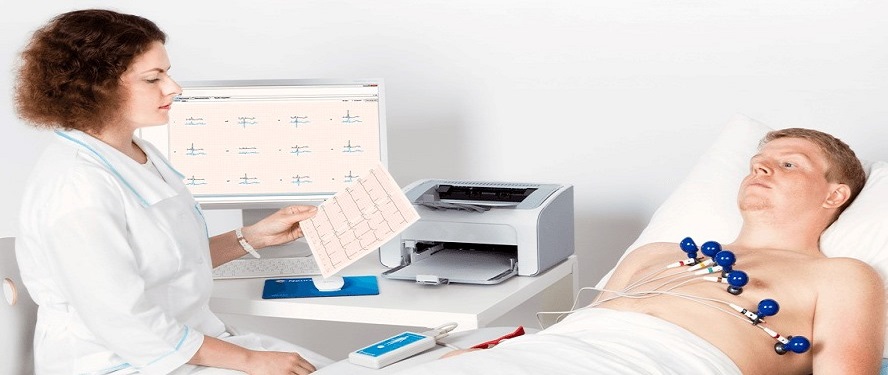
Electrocardiogram
An electrocardiogram records the electrical signals in the heart. It’s a common and painless test used to quickly detect heart problems and monitor the heart’s health.
An electrocardiogram — also called ECG or EKG — is often done in a health care provider’s office, a clinic or a hospital room. ECG machines are standard equipment in operating rooms and ambulances. Some personal devices, such as smartwatches, offer ECG monitoring.
Why it’s done
- An electrocardiogram is a painless, noninvasive way to help diagnose many common heart problems. A health care provider might use an electrocardiogram to determine or detect:
- Irregular heart rhythms (arrhythmias)
- If blocked or narrowed arteries in the heart (coronary artery disease) are causing chest pain or a heart attack
- Whether you have had a previous heart attack
- How well certain heart disease treatments, such as a pacemaker, are working
- You may need an ECG if you have any of the following signs and symptoms:
- Chest pain
- Dizziness, lightheadedness or confusion
- Heart palpitations
- Rapid pulse
- Shortness of breath
- Weakness, fatigue or a decline in ability to exercise
- The American Heart Association doesn’t recommend using electrocardiograms to assess adults at low risk who don’t have symptoms. But if you have a family history of heart disease, your health care provider might suggest an electrocardiogram as a screening test, even if you have no symptoms.
- If symptoms tend to come and go, they may not be detected during a standard ECG recording. A health care provider might recommend remote or continuous ECG monitoring. There are several different types.
